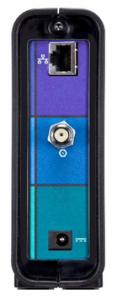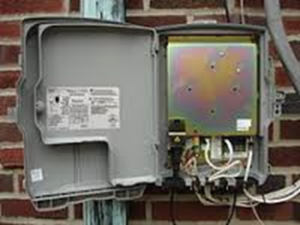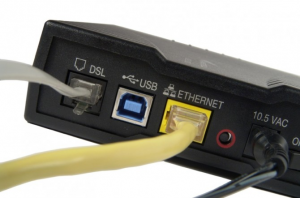Cable
Ask for a “single-port, stand-alone” modem (a.k.a. “residential modem”) to be installed for your cable service.
Learn How to Install a Stand-alone Modem
A modem works better for high-volume business applications like VoIP than a router / business gateway, but unless requested otherwise, most cable and DSL internet providers will install a router / business gateway. Often, when you ask for a modem, the technicians think you don’t understand the difference and will install a router / business gateway anyway. Sometimes by saying “residential modem”, the technicians will better understand that you know what you’re asking for and will install the correct device.
So you want to know why we recommend a modem instead of a router / business gateway? In short, it’s capacity. Modems are designed to do only 1 thing while routers / business gateways do many things. With VoIP, the routers / business gateways supplied by the cable and DSL companies aren’t powerful enough to meet the demand and they start losing information. What you experience on the phone are long periods of silence which then turn into a dropped call.
Fiber
Much of the backbone of the internet is now deployed using fiber optic cable. Fiber-optic uses light instead of electricity to transmit data, so the data capacity is much greater. The fiber-optic cable itself is made from glass or plastic which is not susceptible to electromagnetic interference like metal cables. This allows data to flow over great distances without degrading.
Speeds
Fiber speeds are typically 25-100 Mbps upload/download. The latest deployments by Verizon FIOS and Google Fiber are cable of reaching speeds of 500 Mbps and 1 Gbps respectively
The FCC found that fiber has the lowest latency (18ms) of all internet service types tested. This is why fiber is highly recommended for VoIP phones
Even if typical broadband speeds become 1000 times faster in 20 years, a single existing fiber-optic connection can still support it
Devices
An ONT (optical network terminal) is a type of NID (network interface device) used to bring fiber to the premises. The ONT converts fiber-optic to copper/electric signals.
The connection from the ONT, into the building is either Ethernet or coax cable. VoIP phones work best with an Ethernet connection from the ONT, rather than coax cable. Be sure to ask your fiber installer to run Ethernet cabling into your building. The Ethernet cable can be plugged directly into a Clarity router. You do not need a modem/router installed from your Internet Service Provider!
High Speed DSL
DSL (Digital Subscriber Line) is a type of high speed internet access delivered across the telephone network backbone. This type of connection is most often found in the home, rather than business. Common DSL providers are AT&T, Verizon and CenturyLink.
AT&T DSL is slowly being replaced by AT&T U-verse. Whereas DSL is an analog phone line connection all the way to the ISP, U-verse is a phone line connection to nearby node, and then it switches to fiber optic. This can help with oversubscription issues in residential markets.
Speeds
Upload speeds for DSL are typically 768 kbps to 1.5 Mbps. Download speeds are typically 3 Mbps to 10 Mbps. Upload speeds for UVerse are typically 1 Mbps to 8 Mbps. Download speeds can be 3 Mbps to 75 Mbps.
The farther you are from the ISPs central location, the slower the transmission. Not all phone companies offer DSL. Each DSL subscriber has a dedicated circuit and doesn’t share bandwidth on that circuit with any other users.
Devices
Most DSL provider require their own modem be used. Customers must contact their ISP to have their modem put into Bridge Mode to provide the best quality VoIP phone service.



